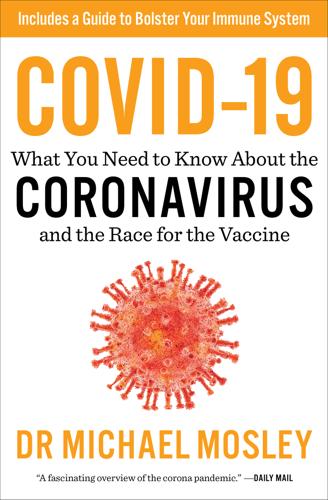
COVID-19: Everything You Need to Know About the Corona Virus and the Race for the Vaccine
by
Michael Mosley
Published 1 Jun 2020
There is good evidence from big, randomized trials that an 800-calorie diet is also one of the best ways to reverse type 2 diabetes and rid yourself of metabolic syndrome (see page 88). 2. Try intermittent fasting Intermittent fasting, where you cut your calories a couple of days a week, is a popular way to lose weight. The 5:2 diet (which I’m famous for) and Time Restricted Eating, where you only eat within a 10-hour window each day, have both been shown to help people lose weight. But intermittent fasting has other health benefits, including potentially helping improve your immune system. More on that in a moment. 3. Eat a more Mediterranean-style diet The traditional diet of Mediterranean countries, rich in olive oil, nuts, oily fish, and legumes, is regularly voted by health professionals as the healthiest diet on the planet.
…
Since then a number of studies have shown that it is an effective way to lose weight, and keep it off, but there is also evidence that this approach can improve the workings of your immune system. In December 2019 there was a review paper published in the prestigious New England Journal of Medicine that looked at the benefits of two different approaches to intermittent fasting: the 5:2 or Time Restricted Eating, where you only eat within a restricted time window (such as from 10 a.m. to 8 p.m.). They concluded that both approaches led to “improvements in blood pressure; resting heart rate; levels of HDL and LDL cholesterol, triglycerides, glucose, and insulin resistance. In addition, intermittent fasting reduces markers of systemic inflammation and oxidative stress that are associated with atherosclerosis.”
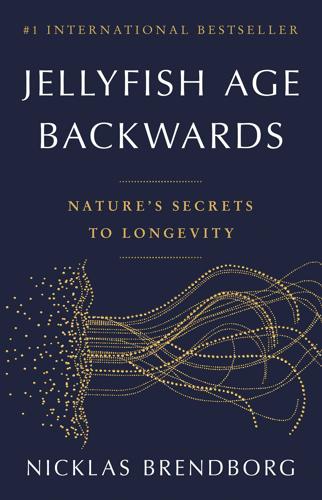
Jellyfish Age Backwards: Nature's Secrets to Longevity
by
Nicklas Brendborg
Published 17 Jan 2023
Some people experiment with extending this fasting period, for example by eating all their food within a window of four to eight hours, instead of the typical twelve to fourteen hours. This approach has had some promising results in mice. For instance, studies show that time-restricted eating protects mice from the negative effects of an unhealthy diet, whether that diet is high in sugar or high in fat. To put it another way, in mice an unhealthy diet can – to some extent – be neutralised by time-restricted eating. I can imagine using a similar strategy during the holidays which is, in fact, the time period where people tend to put on most weight. Beyond time-restricted eating, most other fasting methods involve undertaking all-day fasts for one or more days. This type of fasting is known as intermittent fasting, and is the kind of fasting we particularly see in religious texts.
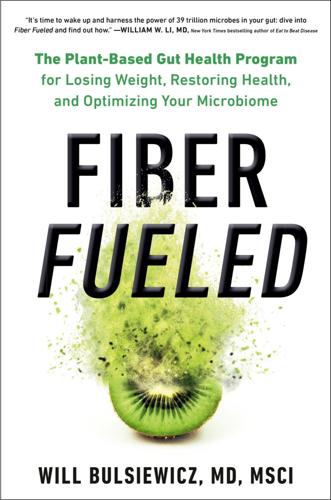
Fiber Fueled: The Plant-Based Gut Health Program for Losing Weight, Restoring Your Health, and Optimizing Your Microbiome
by
Will Bulsiewicz
Published 15 Dec 2020
For example, you can eat literally the exact same food but at different times in the day and have a different effect on your blood sugar. We are most insulin sensitive in the morning and most insulin resistant in the evening. To optimize our eating patterns, we want to anchor our eating around the times that we need our fuel, and then allow our gut to rest for a period of time. This approach is called time-restricted eating, or TRE. Some call it intermittent fasting, but this isn’t intermittent. It’s a lifestyle that you sustain day to day. To properly do TRE, you have to do two things. First, you create time boundaries so there’s a period of food consumption and a period of sustained bowel rest. My recommendation is to rest your gut for at least thirteen consecutive hours, which means restricting your eating hours to eleven or less.
…
There are three supplements that I generally recommend to address some of the challenges in our twenty-first-century life: vitamin B12, vitamin D, and an algae-based omega-3 supplement. It’s best to discuss these with your doctor to determine if they make sense for you and, if so, what dosage you should take. Sleep is powerfully restorative It’s actually incredible the way your body heals when you just allow it to rest. You can think of time-restricted eating as rest for your gut. But sleep is rest for the entire body, including the gut. When we deprive ourselves of sleep, we feel the effects in the microbiome as it shifts toward a profile promoting obesity. No wonder we feel so crummy after a poor night’s rest. Insufficient sleep is associated with increased appetite, weight gain, increased risk of heart disease/stroke/diabetes, impaired immunity, depression, poor concentration/productivity/work performance, and even poor athletic performance.
…
See also fermented foods preservatives in foods (chemical), 33, 39 primary biliary cholangitis, 16 primary sclerosing cholangitis, 16 probiotics (healthy bacteria) about, 7, 55, 141 in apples, 79–80 building momentum in, 57–58 impact of, 7 prioritization of, 145 science on, 143 supplements, 137, 141–49, 143–44, 145–46, 195 processed foods, 38, 39, 41–42, 52, 111, 123–24 prostate cancer, 22, 80, 89, 161 proteins America’s obsession with, 43–44, 50 animal proteins, 43–45, 102 plant proteins, 44, 90, 91–92 proton pump inhibitor prescriptions, 32, 37 psoriasis, 16, 109 psoriatic arthritis, 16 psyllium supplements, 139 pumpkins benefits of, 80 Pumpkin Hummus, 276–77 Pumpkin Pie for Breakfast Smoothie, 260–61 purple plants, 81 Puttanesca Tofu Scramble, 286–87 quercetin, 79 Quick Fix recipes, 209, 215 Quick Garlic Broccoli, 331–32 Quick-Pickled Beets, 230–31 rashes, 109, 110 raw vs. cooked foods, 182 recommended daily intake of fiber, 50 Red Lentil Curry Soup, 263–65 red plants, 80 red wine, 189–90 refined carbohydrates, 39, 51–52, 84, 85 reflux, 13 resistant starches, 56, 74, 78, 162, 190–91 respiratory diseases, 83 restless leg syndrome, 16 restrictive diets, xxiv, 45–47, 77, 82 resveratrol, 81, 189–90 Reynolds, Andrew, 64, 65 rheumatoid arthritis, 16, 30, 62–63, 164 rice, 56, 75 Roasted Italian Medley, 241–42 Roasted Vegetables, 296–97 romaine, 157 rye, 85, 111, 113 rye bread, 135 Saag Tofu, 272–74 SAD (Standard American Diet), 37–47, 41–42, 178 salads Buffalo Chickpea Salad, 301–2 Citrus and Mint Salad, 265–66 Daily Salad, 229–30 Down ’n’ Dirty Kale Salad, 233–35 Mediterranean Grain Salad, 291–92 No-Tuna Sunflower Salad, 267–68 Tempeh Tacos and Taco Salad, 236–38 Salmonella, 9, 57, 127 salt, 36, 39, 129, 214 sanitation, 33 sarcoidosis, 16 Sartor, Balfour, 78 satiety hormones, 51, 66, 138, 145–46, 190–91 saturated fats, 43, 46 sauerkraut, 118–19, 120, 129–30, 130–31 scleroderma, 16 seasonal allergies, 16 seaweed, 78, 167–68 second meal effect, 65–66 seeds, omega-3, 158–60, 185 sensitive gut, 95–115 serotonin, 22–23 Sesame Noodle Meal Prep Bowl, 292–94 Seventh-day Adventists, 38 sexual attraction, 21 sexual dysfunction, 22 Shaheen, Nick, xxiii sharing the message about gut healing, 96–97 short-chain fatty acids (SCFAs) about, 54–55 and animal proteins, 102 benefits of, 56, 57, 58–59 building momentum in production of, 57–58 and cancer prevention, 63–65 central importance of, 60 and cognition/brain function, 67–68 and correcting leaky gut, 59–60 and diabetes prevention, 65–66 and diversity of plants consumed, 74–75 and exercise, 197 and gluten-restricted diets, 86 and heart disease prevention, 65, 66–67 and legumes, 89–90, 91 and Paleo diet, 84 and pH of the colon, 120–21 and prebiotic supplements, 138, 140 role of, in immune system, 60–63 and sulforaphane in cruciferous vegetables, 165 and white potatoes, 78 and whole grains, 84, 91 See also butyrate shortness of breath, 13 Simple Overnight Oats, 261–62 sinus congestion, 13 Sjögren’s syndrome, 16 skin health, 13, 80, 157 sleep, 23, 195–96 smoothies Chocolate Peanut Butter Super Smoothie, 287–88 preferred over juices, 188 Pumpkin Pie for Breakfast Smoothie, 260–61 Superfood Smoothie, 225–26 snacks in Fiber Fueled 4 Weeks, 209, 214 Biome Broth, 249–50 Coconut Oat Balls, 250–51 Muhammara Dip, 248–49 Omega-3 Balls, 342–43 Plant-Powered Trail Mix, 277 Pumpkin Hummus, 276–77 Snicker Bites, 345 Speedy Edamame, 310 Turmeric Energy Bites, 310–11 White Bean Hummus, 341–42 Snicker Bites, 345 social media, 198 soil health, 120, 122 soluble fiber, 53, 56, 65, 139–40 Sonnenburg, Justin, 68, 69 sorbitol, 113 soups Biome Broth, 249–50 Nourishing Tomato Noodle Soup, 238–39 Red Lentil Curry Soup, 264–65 Supercharged Miso Soup, 322–23 Tuscan Kale Soup, 335–37 Wild Biome Super Soup, 232–33 source of fiber, importance of, 52 sourdough bread, 126, 135 soy benefits of, 88–89 choosing organic, non-GMO, 89 miso, 132–33 Miso, Mushroom, and Soba Bowl, 271–72 soybeans, 91, 125 soy milk, 89, 126 Speedy Edamame, 310 Supercharged Miso Soup, 322–23 Tempeh Tacos and Taco Salad, 236–38 See also tofu spices and herbs, 160, 211, 213 Spicy Breakfast Tacos, 288–89 spinach, 81, 157 spirulina, 168 Stewart, William, 33 stomach cancer, 81 stool, 10–11, 12, 16–17, 149 Strachan, David, 13 Strawberry Cheesecake Bites, 343–45 stress, 187, 199 strokes and apples, 79 and Fiber Fueled program, xvi role of lifestyle in, 31 and SCFAs’ protective mechanisms, 65 and sleep deprivation, 195 and sulforaphane in cruciferous vegetables, 164 and whole grains, 83 Stuffed Taco Sweet Potatoes, 269–70 sugars, 24, 36, 39, 51, 113 sulforaphane in cruciferous vegetables, 162–66 Sunday Pasta, 337–39 Supercharged Miso Soup, 322–23 Supercharged Roasted Roots, 231–32 superfoods, 151 Superfood Smoothie, with Bowl Option, 225–26 Super Seedy Breakfast Porridge, 223–24 supplements, xiv–xv, 195 sweet potatoes benefits of, 80 Berry Good Sweet Potato Toast, 226–27 Lentil–Sweet Potato Stew, 274–75 Stuffed Taco Sweet Potatoes, 269–70 Talalay, Paul, 163 tamari, 89 taste buds, 175–77 T cells, 39, 61 teas, 56 technologies, advances in, 34 telomeres, xvii tempeh, 133–34 organic, non-GMO, 89 Tempeh Tacos and Taco Salad, 236–38 testosterone (androgens), 20–21, 42 Thai Rainbow Bowls with Peanut Tofu, 297–99 thyroid health, plants that benefit, 78 time-restricted eating (TRE), 193–94 TMAO (trimethylamine N-oxide), 8, 44–46, 67, 69, 84, 104, 190 tofu, 89 Crispy Baked Tofu, 294 Curry Tofu Bok Choy, 243–45 Puttanesca Tofu Scramble, 286–87 Saag Tofu, 272–74 Thai Rainbow Bowls with Peanut Tofu, 297–99 Tofu Scramble Bowls, 259–60 tomatoes, 80, 81 Toxoplasma gondii, 5 trans fats, 43 traumatic brain injury, 68 trehalose, 41 triglycerides, 138, 197 turmeric and black pepper, 82 Turmeric Energy Bites, 310–11 Turmeric Latte, 340–41 Turnbaugh, Peter, 46, 125 Tuscan Kale Soup, 335–37 type 1 diabetes, 14, 17, 30 type 2 diabetes and apples, 79, 80 and bacterial endotoxins, 9, 42 cancer’s link to, 18 and dysbiosis in gut microbiota, 19 and fiber consumption, 65 and sulforaphane in cruciferous vegetables, 165 and whole grains, 85 types of fiber insoluble fiber, 53, 56 soluble fiber, 53, 56, 65, 139–40 ulcerative colitis, 15, 16, 30, 37, 44 vaccines, 33 vagus nerve, 22 vegetable oil, 43 vegetables anti-inflammatory properties of, 103 and Blue Zone diets, 38 See also specific vegetables Verdú, Elena, 27 vinegar, 124 viruses, 5 vitamin B12, 195 vitamin D, 195 wakame, 168 walking, 197–98 walnuts, 56 water consumption, 185–87 watermelon, 80 Watson, James, 25 weakness, 13 Week 1, 215–53 drinks, snacks, and desserts, 219–20 meal prep, 219 menu, 220–22 Quick-Fix recipes, 220 recipes, 222–53 shopping list, 215–19 Week 2, 253–79 drinks, snacks, and desserts, 255 meal prep, 256 menu, 256–58 Quick-Fix recipes, 256 recipes, 259–79 shopping list, 253–55 Week 3, 280–313 drinks, snacks, and desserts, 282–83 meal prep, 283 menu, 284–85 Quick-Fix recipes, 283 recipes, 286–313 shopping list, 280–82 Week 4, 314–45 drinks, snacks, and desserts, 316 meal prep, 317 menu, 317–19 Quick-Fix recipes, 317 recipes, 320–45 shopping list, 314–16 weight gain, 13, 19, 20, 30, 51, 195 weight loss after author’s weight gain, xxii, xxiv–xxv conventional perspectives on, 19 and exercise, 197 and fad diets, 45–47 and fermented foods, 124, 132 fiber’s promotion of, xv, 52 and fruits, 153, 154 and legumes, 88, 91 and seaweed, 167 and sulforaphane in cruciferous vegetables, 164 and whole grains, 91 wheat and agricultural practices, 75 and fructans, 113 and gluten, 85, 111 and lectins, 91 wheat allergy, 108 wheat bran, 78 wheat dextrin supplements, 139–40 whole wheat, 86, 135 wheezing, 13 Whipped Coconut Cream, 252–53 White Bean Hummus, 341–42 white-green plants, 81 Whole 30 diet, xiv whole foods, 38, 52 whole grains anti-inflammatory properties of, 84, 85, 103 benefits of, 81, 83–85, 155 and blood pressure, 91 and Blue Zone diets, 38 and cancer, 83, 91 and cardiovascular disease, 83, 91 and cholesterol, 91 and F GOALS, 155 and gluten, 85–87, 111 and inflammation, 84, 85, 91 and insulin resistance, 91 and lectins, 90 and legumes, 91–92 and life expectancy, 91 and Paleo diet, 46 and refined grains, 84 and short-chain fatty acids, 84, 91 and weight loss, 91 whole wheat, 86, 135 Wild Biome Super Soup, 232–33 worms, 5 yeasts/fungi, 4–5, 6 yellow-orange plants, 81 yogurt, 134 Zesty Lemon Chia Pudding, 251–53 Zhao, Liping, 65 ABCDEFGHIJKLMNOPQRSTUVWXYZ About the Author Will Bulsiewicz, MD, MSCI is a board-certified, award-winning gastroenterologist.
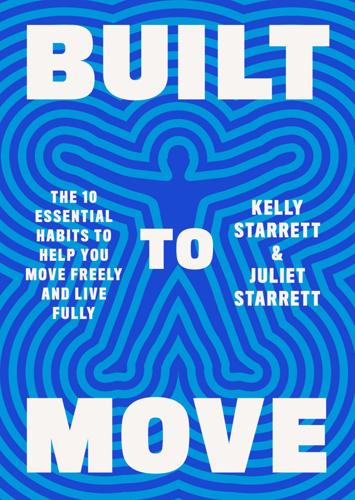
Built to Move: The Ten Essential Habits to Help You Move Freely and Live Fully
by
Kelly Starrett
and
Juliet Starrett
Published 3 Apr 2023
PloS ONE 10, no. 7 (2015): e0132523. DOI: 10.1371/journal.pone.0132523. Kolata, Gina. “In a Yearlong Study, Scientists Find No Benefit to Time-Restricted Eating.” New York Times, April 20, 2022. Liu, Deying, Yan Huang, Chensihan Huang, et al. “Calorie Restriction With or Without Time-Restricted Eating in Weight Loss.” New England Journal of Medicine 386, no. 16 (April 2022): 1495–1504. DOI: 10.1056/NEJMoa2114833. Lowe, Dylan A., Nancy Wu, Linnea Rohdin-Bibby, et al. “Effects of Time-Restricted Eating on Weight Loss and Other Metabolic Parameters in Women and Men with Overweight and Obesity: The TREAT Randomized Clinical Trial.”

Hormone Repair Manual
by
Lara Briden
Published 14 Apr 2021
Intermittent fasting also stimulates the beneficial process of autophagy, which means your body ‘eats itself’ (auto: self, phage: eat), which sounds bad but gives your cells the opportunity to remove and recycle damaged parts and replace them with healthy new parts. Autophagy can increase longevity and help to reduce the risk of cancer and dementia. Methods of intermittent fasting include alternate-day fasting, 5:2 intermittent fasting (reduced calories two days per week), and daily time-restricted eating or the eight-hour eating window, which is the method I prefer. To do an eight-hour eating window, simply eat a normal dinner by 6 pm including all three macronutrients (protein, fat and at least some starch). Then have no calories until 10 am the next morning, at which time you should eat a protein-rich meal.
…
‘You’re the first person who ever told me I could eat enough to feel good, considering how I look.’ By ‘considering how I look’, Mandy meant her body shape. She meant I was the first person to see her weight and still say she should eat in a way to feel good. Mandy continued her protein breakfasts and time-restricted eating and found that, because her energy was so much better, she was eventually able to quit desserts. When we retested her insulin six months later, all her readings were in the normal range. By that point, she had lost 10 centimetres around her waist. You may have noticed that the only numbers I mentioned in Mandy’s story were her insulin readings and centimetres lost around her waist.
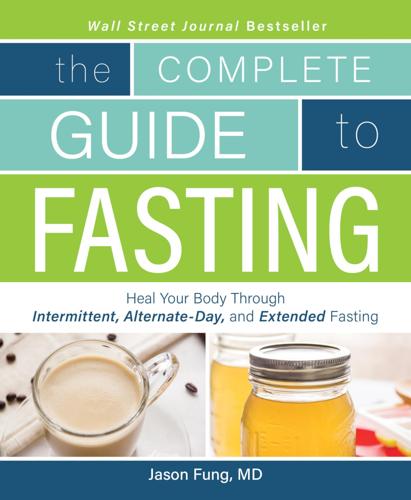
Complete Guide to Fasting: Heal Your Body Through Intermittent, Alternate-Day, and Extended Fasting
by
Jimmy Moore
and
Jason Fung
Published 18 Oct 2016
Slightly longer fasting periods are often required for that. 16-Hour Fasts This regimen incorporates a sixteen-hour period of fasting into your daily meal schedule. For example, you might fast from 7 p.m. to 11 a.m. daily. You could also say that you have an eight-hour eating window every day. For that reason, it is sometimes called time-restricted eating. On this schedule, most people skip the morning meal every day. But how many meals you eat within that eight-hour window is your choice. Some people choose to eat two meals during that window and others eat three. FASTING ALL-STARS ABEL JAMES For most people, I recommend 16:8 intermittent fasting (a compressed eating window) over longer-term fasting.
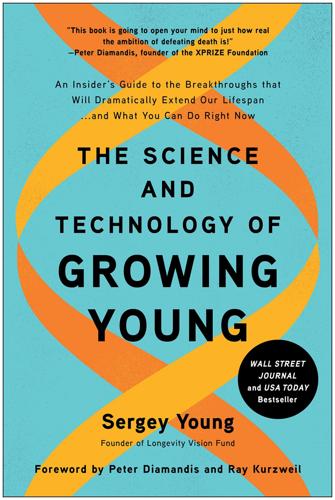
The Science and Technology of Growing Young: An Insider's Guide to the Breakthroughs That Will Dramatically Extend Our Lifespan . . . And What You Can Do Right Now
by
Sergey Young
Published 23 Aug 2021
For those just setting out in the world of calorie restriction, I suggest starting with a 16:8-hour intermittent fasting regimen. This is where you eat all of your meals within one eight-hour period—for instance, between 8 am and 4 pm, or between 10 am and 6 pm. You then simply refrain from eating again until the next morning. As you become more comfortable with time-restricted eating, you can consider bumping up to an 18:6 model, where you eat all of your calories between noon and 6 pm, for instance. Clinical data show that intermittent fasting improves weight loss, insulin stability, cholesterol levels, and blood pressure, as well as energy and mental alertness, and it can also add years to your life.18 Personally, in addition to intermittent fasting, I do a complete fast for thirty-six hours, every week.